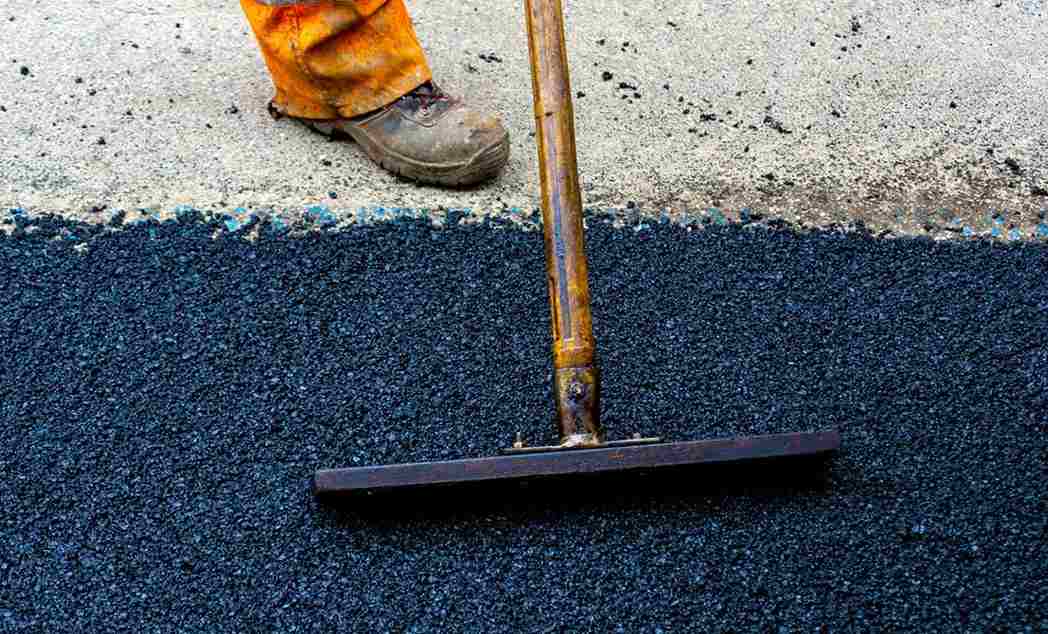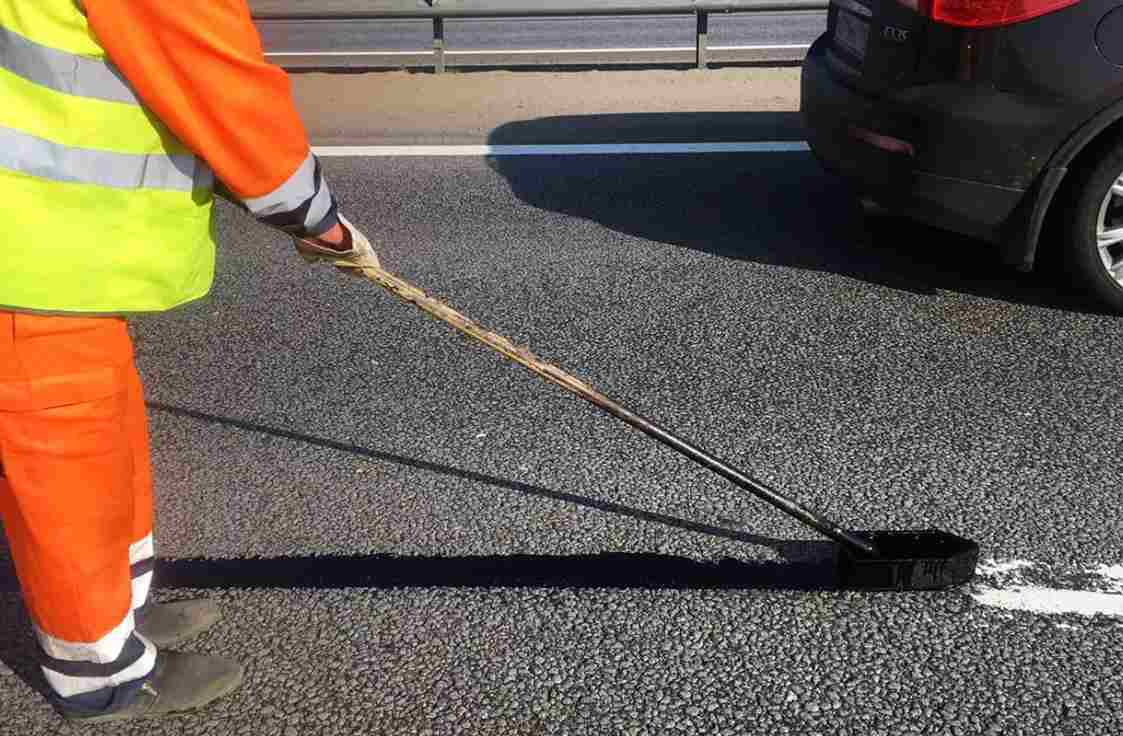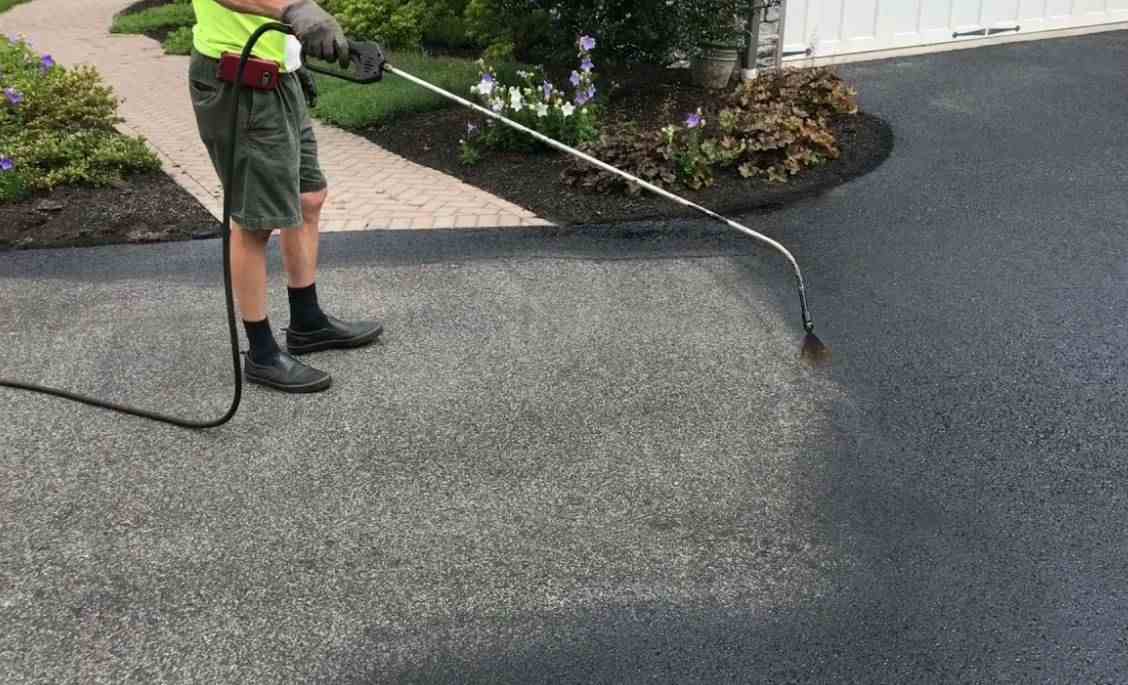There is no doubt that all asphalt cement pavements will fail at some point. Neglect and poor maintenance cause quick cracking and pothole formation. Bitumen crack sealers are the best materials to use. They come in a variety of specifications to fight any kind of pavement crack depending on the reason for cracking. There are various reasons that may be classified into four groups.
- Pavement Construction: Problems in this field include wrong asphalt mix selection, poor mix design, technical mistakes, inadequate ambient conditions, and so on. If all of these factors are satisfied, poor craftsmanship may be blamed for early pavement deterioration.
- Traffic Frequency and Load: As the major drivers of asphalt pavement deterioration, fatigue cracking and rutting are the two most critical aspects in the pavement design process.
- Degradation of the asphalt cement binder, mostly due to weathering in the presence of degrading UV radiation.
- Climatic conditions, as well as pavement expansion and contraction due to temperature variations and freeze-thaw cycles. Water quickly enters the pavement's foundation and sub-base when fractures emerge, affecting the structural integrity of the aggregate components. Pavement joint and crack sealants are used to keep the pavement in good condition by reducing water infiltration and minimizing debris accumulation. Sealing cracks in flexible pavements has been thoroughly established and documented as a solid preventative maintenance operation that adds many years to the pavement's life, especially when paired with other preventive treatments such as slurry seals, chip seals, and sealcoating.
- Crack sealing is an important activity that must be done on a yearly basis.
- Crack sealing is one of the most cost-effective ways to extend the life of a pavement by three to eight years.
Therefore, the careful choice of crack sealer is of great importance. Customers must pay attention to the composition and specifications before purchasing. 
crack sealing materials
Crack sealants and fillers differ in performance. Crack sealants have higher-performance materials and must expand and compress at different temperatures and loads. Fill material must avoid water and incompressible materials. To choose the best material for sealing and filling there is some information that is essential to know. Sealant Crack sealing materials adhere to crack walls, expand with crack movement, and withstand traffic abrasion and damage. Elastomeric sealants are best for working cracks. This implies the sealant may extend 10 times its original size without breaking. These sealants restore their size over time.  These sealants are usually employed at high temperatures because they thicken at normal temperatures and cure by cooling and reforming into complicated structures. Hot pour materials must be heated to 188 to 200°C. Extreme temperatures can degrade or crosslink certain materials over time. Follow the manufacturer's instructions carefully. Thermoplastics may develop structures when cooled, but reheating reverses this. The hot application ensures crack-wall adhesion. Most hot pour materials are rubber-modified asphalt with excellent abrasion resistance. Cold pour crack sealing products are silicone-based and utilized before paving.
These sealants are usually employed at high temperatures because they thicken at normal temperatures and cure by cooling and reforming into complicated structures. Hot pour materials must be heated to 188 to 200°C. Extreme temperatures can degrade or crosslink certain materials over time. Follow the manufacturer's instructions carefully. Thermoplastics may develop structures when cooled, but reheating reverses this. The hot application ensures crack-wall adhesion. Most hot pour materials are rubber-modified asphalt with excellent abrasion resistance. Cold pour crack sealing products are silicone-based and utilized before paving.  The materials can cure by being exposed to atmospheric moisture or mixed with a hardening agent and silicone. Low-abrasion materials shouldn't be used in high-traffic locations. Crack sealants can last up to 9 years, depending on preparation and substance. Due to the movement of working cracks, a suitable crack sealant must: Stretch the crack to its greatest opening and shrink it without breaking. Expand and contract without breaking or separating from cracked walls. Crack filling involves plugging non-working or low movement cracks to decrease water and incompressible material penetration. These cracks aren't inactive and demand flexibility. The filling requires less crack preparation than sealing, and filler material performance is lower. It's a short-term solution used to hold the pavement together between larger maintenance operations or restoration. Fillers last 8 years.
The materials can cure by being exposed to atmospheric moisture or mixed with a hardening agent and silicone. Low-abrasion materials shouldn't be used in high-traffic locations. Crack sealants can last up to 9 years, depending on preparation and substance. Due to the movement of working cracks, a suitable crack sealant must: Stretch the crack to its greatest opening and shrink it without breaking. Expand and contract without breaking or separating from cracked walls. Crack filling involves plugging non-working or low movement cracks to decrease water and incompressible material penetration. These cracks aren't inactive and demand flexibility. The filling requires less crack preparation than sealing, and filler material performance is lower. It's a short-term solution used to hold the pavement together between larger maintenance operations or restoration. Fillers last 8 years. 
crack sealer machine
A machine called a crack sealer (also known as a crack fill) is manufactured for the purpose of providing waterproofing and sealing cracks and seams during construction and maintenance work on roads, airfields, and bridges. This machine melts bitumen-elastomeric sealing compounds and pours them into the cracks and seams. Horizontal paddle mixers, electrically heated hoses, diesel engines, and hydraulic drives are components that are always included in these machines, despite the fact that their specifications and implements are often rather diverse. To start crack sealing, remove garbage and weeds from the affected area. One driveway only needs a screwdriver. If you use a power washer, dry the area before repairing cracks.  When employing hot pour rubberized crack filler, a melter is essential. Wider fissures need this instead of a cold pour. Instead of DIY crack repair, use a company. Crack repair requires three tools, whether you're a homeowner or a professional. You'll need a technique to clean and prep the damaged area, a melter for hot pour filler, and an applicator. Asphalt crack repair equipment might be daunting. Choices abound. You must determine which machinery and tools will be most lucrative for your plans. Let's compare crack-repair tools.
When employing hot pour rubberized crack filler, a melter is essential. Wider fissures need this instead of a cold pour. Instead of DIY crack repair, use a company. Crack repair requires three tools, whether you're a homeowner or a professional. You'll need a technique to clean and prep the damaged area, a melter for hot pour filler, and an applicator. Asphalt crack repair equipment might be daunting. Choices abound. You must determine which machinery and tools will be most lucrative for your plans. Let's compare crack-repair tools.  Hot pour requires heating and application. Asphalt crack repair equipment is needed. Melters heat and maintain hot blocks of hot pour crack filler for use in crack-repair equipment. Find the right size. You need enough capacity to accomplish the work, but not too much for your firm. Get one with an agitator handle to mix the pour. Applicators are versatile. From pour pots to wheeled crack-repair equipment, it all depends on your needs. Pour pots are cheap and easy to use, while wheeled applicators are faster. If you want to work rapidly, get an applicator with a scraper.
Hot pour requires heating and application. Asphalt crack repair equipment is needed. Melters heat and maintain hot blocks of hot pour crack filler for use in crack-repair equipment. Find the right size. You need enough capacity to accomplish the work, but not too much for your firm. Get one with an agitator handle to mix the pour. Applicators are versatile. From pour pots to wheeled crack-repair equipment, it all depends on your needs. Pour pots are cheap and easy to use, while wheeled applicators are faster. If you want to work rapidly, get an applicator with a scraper. 
difference between crack sealing and crack filling
Frequently, crack sealing and crack filling are used interchangeably. Indeed, they are not the same and there are some differences between them. In the past, there was little distinction between crack filling and sealing; nevertheless, the purpose of each should be recognized in order to employ the most cost-effective and durable crack treatment. Crack sealing is the use of specialized materials above or within active pavement cracks to prevent the infiltration of water and other incompressible. Working crack motions are horizontal and/or vertical crack movements greater than 0.25 millimeters (2.5 mm). Typically, working cracks are transverse; however, certain longitudinal fractures may also satisfy the movement criterion. Crack sealants are rubber-based materials that can seal cracks while also bending with pavement movement. They are applied for cracks that continue to increase in size and severity due to weather and traffic.  Sealants for cracks are exceptionally adhesive and cohesive. In other words, they adhere firmly to the fracture walls and do not tear or separate as the fractures get deeper. Again, their primary responsibility is to keep water, salts, and debris from entering the sub-base and base courses of the pavement. Crack filling is the process of inserting materials into non-functional cracks to drastically reduce water penetration and strengthen the surrounding pavement. Non-working motions are horizontal and/or vertical movements of less than 0.1 inches. Generally, nonfunctional cracks are longitudinal, diagonal, and occasionally block-shaped. Due to the close proximity of the margins, these cracks do not shift considerably. For crack filling, non-rubberized materials such as crumb rubber, AC-3, and asphalt emulsion are utilized because flexibility is not anticipated. Therefore, crack filling is limited to sealing cracks that do not move much. It is reasonable to presume that the material and equipment requirements for crack sealing are more stringent than those for crack filling.
Sealants for cracks are exceptionally adhesive and cohesive. In other words, they adhere firmly to the fracture walls and do not tear or separate as the fractures get deeper. Again, their primary responsibility is to keep water, salts, and debris from entering the sub-base and base courses of the pavement. Crack filling is the process of inserting materials into non-functional cracks to drastically reduce water penetration and strengthen the surrounding pavement. Non-working motions are horizontal and/or vertical movements of less than 0.1 inches. Generally, nonfunctional cracks are longitudinal, diagonal, and occasionally block-shaped. Due to the close proximity of the margins, these cracks do not shift considerably. For crack filling, non-rubberized materials such as crumb rubber, AC-3, and asphalt emulsion are utilized because flexibility is not anticipated. Therefore, crack filling is limited to sealing cracks that do not move much. It is reasonable to presume that the material and equipment requirements for crack sealing are more stringent than those for crack filling. 
asphalt crack sealing specifications
Pavement-specific crack sealants. Depending on construction and function, various pavements require different materials. Crack sealing is often employed to maintain stiff (concrete) pavements, despite not being mentioned previously. The following specs and remarks are for flexible (asphalt) and stiff (concrete) pavements.
- Flexible asphalt-cement pavements
Hot-applied, asphalt cement-based crack sealants are the most effective and extensively utilized on flexible pavements. Before application, such materials must be pre-melted at high temperatures. The American Society for Testing and Materials (ASTM) standards are;
- The standard for hot-applied joint sealants for concrete and asphalt pavements. AASHTO M301 or SS-S-1401C equivalent.
- The standard for Hot Crack-Filler for Asphalt Concrete and Portland Cement Pavements.
- Joint Sealants, Non-Jet-fuel Resistant, Hot-Applied, for Cement and Asphalt Concrete Pavements.
 STATE DOT SPECIFICATIONS – Modifications of the above-mentioned. Where cost or use justifies, emulsified asphalt, cut-back asphalt, and chemically cured goods will be employed.
STATE DOT SPECIFICATIONS – Modifications of the above-mentioned. Where cost or use justifies, emulsified asphalt, cut-back asphalt, and chemically cured goods will be employed.
- Concrete Roads
Depending on the pavement use, stiff pavement materials vary more than asphalt. Hot asphalt-based crack sealants work best on hard pavements. Specifications are below:
- ASTM D 1190-97 specifies a hot-applied, elastic concrete joint sealer. AASHTO M173 or SS-S-164 equivalent.
- ASTM D 3405-97.
- ASTM D 5078-95.
- Standard Specification for Cold-Applied, Single-Component, Chemical-based Curing Silicone Joint Sealant for Cement Concrete Pavements.
- ASTM D 2628-91 — Polychloroprene Elastomeric Joint Sealant for Concrete Pavements.
- ASTM D 3569-96 Standard Specification for Hot-Applied, Elastomeric, Jet-Fuel Resistant Joint Sealant for Portland Cement Concrete Pavements.
- Standard Specification for Hot-Applied, Elastomeric, Jet-Fuel Resistant Joint Sealant for Portland Cement Concrete and Tar-Concrete Pavements.
- Joint, Jet-fuel Resistant, Hot-Applied Sealants for Portland Cement and Tar Concrete Pavements.
- Fuel- and exhaust-resistant. Joint Sealants, Two-Component, Jet-Blast Resistant, Cold Applied for Portland Cement Concrete Pavements.
- Airfield joint sealing's benefits haven't been established. Spalled asphalt can harm airplane engines. Crack sealing prevents costly engine damage.
crack sealing procedure
The application technique and crack sealing procedure will be influenced to some degree by the material that is used. In most cases, asphalt emulsions are placed straight to the fissures in the pavement. It is not necessary to apply a blotter coat (a thin coating of sand) to hot-applied rubber-modified sealants, especially asphalt rubber, because they have superior adhesion and do not need it before trafficking. Blotter coating is a necessary step that must be completed before emulsions can be transported. When applying emulsions, you can use devices that rely on gravity to deliver the liquid, such as pour pots and pressure hoses. It may be necessary to heat certain emulsions in order to reach the desired viscosity before applying them. During the entire process of their application, hot-applied rubberized sealants need to be agitated, heated and kept at the appropriate temperature.  Controlling the temperature is essential for preventing the degradation of modified materials made of polymer and rubber. Agitation is required for fiber-filled materials that are applied using hot temperatures because the fiber may settle. In these kinds of circumstances, you should consider using oil heating indirectly. The size of the job will determine the capacity of the sealant or filler application equipment that will be required. It is recommended to preheat the material before it is used to ensure the highest level of productivity. The rate at which a sealant or filler is applied has a significant impact on the final product quality of a project that involves crack sealing or filling. It is possible for treated areas to develop fat spots, localized sensitivity, and flushing if an excessive amount of sealer or filler material is applied when the areas are overlaid with a hot mix.
Controlling the temperature is essential for preventing the degradation of modified materials made of polymer and rubber. Agitation is required for fiber-filled materials that are applied using hot temperatures because the fiber may settle. In these kinds of circumstances, you should consider using oil heating indirectly. The size of the job will determine the capacity of the sealant or filler application equipment that will be required. It is recommended to preheat the material before it is used to ensure the highest level of productivity. The rate at which a sealant or filler is applied has a significant impact on the final product quality of a project that involves crack sealing or filling. It is possible for treated areas to develop fat spots, localized sensitivity, and flushing if an excessive amount of sealer or filler material is applied when the areas are overlaid with a hot mix. 
best asphalt crack filler
Crack sealing is a low-cost maintenance procedure for both flexible (asphalt cement) and stiff (Portland Cement Concrete) pavements. There are numerous brands and manufacturers of asphalt crack filler and sealer but choosing the best is a difficult choice to make. Crack sealing and filling are included in the majority of states' standard pavement repair programs in the United States. Maintenance staff must understand the difference between crack filling and crack sealing, use the proper product, and apply it precisely according to the product's instructions. Crack sealants are materials that are developed to be specific to the pavement structure, traffic volume, pressures, and environmental conditions. The great majority of crack fillers are composed of asphalt cement that has been treated with polymers or other chemicals/fillers. Some specialty crack sealants are made out of silicone or curing chemicals that have many components. The performance criteria are specified by ASTM, Federal Specification, or state specifications. The DOTs are a wonderful reference for the kind of products that should be chosen for a certain project inside a specific geographical region in order to achieve the best degree of performance.

